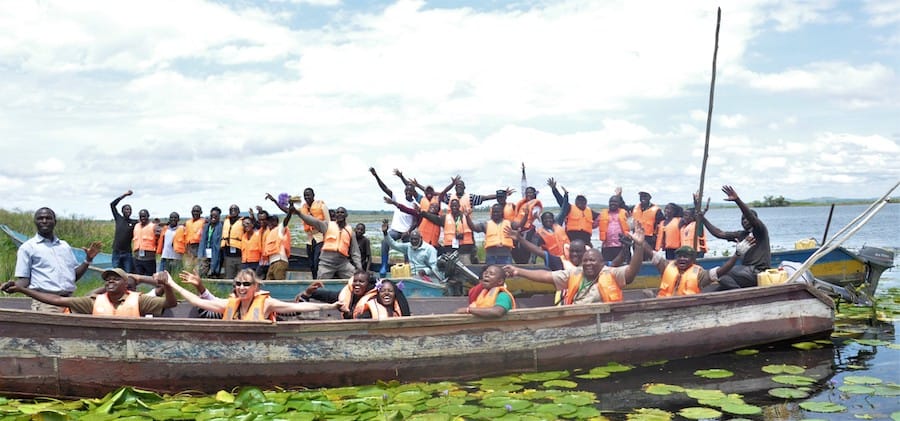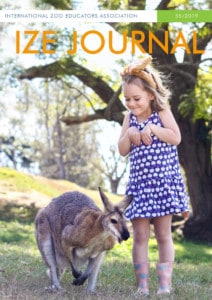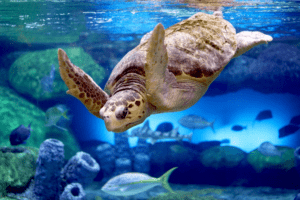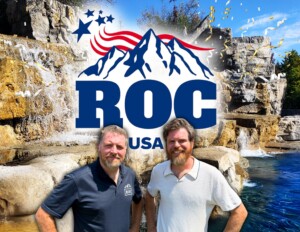By Dr Judy Mann-Lang, President-Elect, International Zoo Educators Association (IZE)
Zoos and aquariums are a fun day out, but what role can they play in sparking a lifelong interest in wildlife and conservation? One of the most famous marine biologists in the world, Dr Sylvia Earle, attributes a visit to an aquarium for inspiring her interest in the ocean, saying:
“The first time I met a live fish face to face, I was fascinated with the way the little animal came to the edge of its glassed-in world and looked at me, meeting my eyes with apparent curiosity. I was not yet old enough to go to school. But thanks to that captive universe of water, I learned at an early age that fish have faces, beautiful eyes, amazing behaviours.“
Dr Kerry Sink is a leading marine conservationist in South Africa. She has worked tirelessly towards the proclamation of the country’s 22 new Marine Protected Areas. Kerry also attributes her passion for the ocean to the zoo & aquarium sector, after her participation in a four-day marine life course at the Durban Aquarium in South Africa.
Another example is Dr Liam Smith, a world leader in conservation behaviour and Director of BehaviourWorks Australia. He started as a safari guide at Werribee Open Range Zoo in Australia. Meanwhile, Dr Diogo Verrisimo, a well-known researcher who works around the world on the design and evaluation of conservation behaviour change interventions started his career working as an educator at Lisbon Zoo, in Portugal.
Zoos & aquariums ignite passion
These stories are just a few of the many thousands demonstrating the role of zoos and aquariums in inspiring people to care for nature. And they also show the widescale and long-term impact that one encounter can have. Not just on an individual, but on the many people that that one person touches.
An emotional connection with an animal is a powerful force. But someone needs to advocate for the animals, tell their stories and empower action. This is where the International Zoo Educators Association (IZE) comes into the story.
Dating back to 1972, the IZE’s goal is to expand the educational impact of zoos and aquariums worldwide. Its mission is to engage members to achieve biodiversity conservation by encouraging sustainable behaviours in people who visit zoos and aquariums.
Introducing the International Zoo Educators Association
IZE membership is broad and currently, it has over 600 members from over 200 different facilities in 51 countries. This wide reach means that, around the world, competent and inspired educators are reaching thousands of teachers and millions of children and families.
The IZE Board consists of elected office bearers from all regions. Each Board member voluntarily contributes their time and expertise because of their commitment to conservation education.

Professional development is also a key strategic focus for the International Zoo Educators Association. Members have multiple opportunities, including a Job Experience Program. This creates opportunities for members to work alongside colleagues in a different country gaining skills through inter-cultural learning and understanding.
It also offers the Sponsored Delegate Program. This provides full sponsorship for a select number of delegates to attend an IZE conference. Plus, IZE’s In-Country Training enables educators in a region to attend workshops tailored to their needs, presented by international experts.
In addition to this, there are opportunities to attend on-line training. This is conducted through the San Diego Zoo Global Academy, as well as other on-line workshops and webinars.
Education strategy

An important milestone in 2020 was the launch of the World Zoo and Aquarium Conservation Education Strategy. This was presented in partnership with the World Association of Zoos and Aquariums (WAZA).
This strategy highlights the critical role of conservation education in the work of zoos and aquariums. It also clearly demonstrates the interdependence of all four pillars of operation: Conservation, Welfare, Sustainability, and Conservation Education.
To date, the Strategy is available in three languages and is being used around the world.
The IZE Journal is an annual publication that showcases the best of conservation education around the world. Competition to publish in the journal is stiff. This results in high-quality articles that feature best practice conservation education from around the globe.
The International Zoo Educators Association connects people
The Biennial Conference is a highlight of the IZE calendar. Each one provides delegates with an unforgettable experience with colleagues from around the world sharing experiences and also forging lifelong friendships. In between conferences, members can communicate through the website as well as social media.

Excellent animal care is the foundation of any zoo or aquarium. However, simply providing excellent animal care is not enough. We also need to ensure that every exhibit helps to inspire people to care for nature. So, we need competent, passionate and inspiring educators.
To conclude, as Dr Sylvia Earle said, “Never again will there be a better time to use the power of knowing to inspire caring and through caring, doing what it takes to save what remains of the natural systems that underpin everything humans need and care about.
“Zoos and aquariums have an unprecedented opportunity to use their power to educate and inform by amplifying the message: we must cherish and protect wildlife and wild places—land and sea—as if our lives depend on it, because they do.”
Email here for more information or to join the International Zoo Educators Association.
Top image: IZE members work with children in many different settings around the world. These children are exploring and playing in nature in Vietnam. Photo from Save Vietnam Wildlife.









